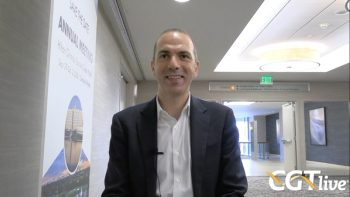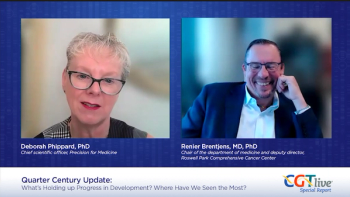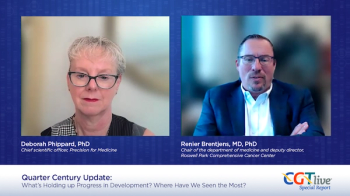
DMD Gene Therapy Shows Continued Microdystrophin Expression
Motor and pulmonary function have stabilized or improved in participants treated with SGT-001.
The gene therapy SGT-001 (Solid Biosciences) continued to demonstrate durable expression of microdystrophin for up to 24 months in participants with Duchenne muscular dystrophy (DMD) from the phase 1/2 IGNITE DMD study (NCT03368742).1
Updated data from the study were presented at the
“DMD is a progressive, lethal form of muscular dystrophy caused by the absence of the protein dystrophin, which is responsible formaintaining muscle structure and function through successive bouts of contraction and relaxation,” Morris and colleagues wrote.1
The IGNITE DMD study is evaluating SGT-001, which contains a form of dystrophin that fits within the adenovirus-associated vector (AAV) while maintaining critical domains including the neuronal nitric oxide synthase (nNOS) binding domain. Preclinical studies have shown that nNOS localization to the muscle membrane through the binding domain of dystrophin protects against exercise-induced muscle ischemia and preserve muscle function due to increased circulating nitric oxide levels.
READ MORE:
Updated data from participants in the 2E14 vg/kg group demonstrated stabilization or improvement in motor function, pulmonary function, and other outcomes compared to baseline and natural history declines. These outcomes were evaluated by use of theNorth Star Ambulatory Assessment, 6-Minute Walk Test, Forced Vital Capacity % predicted (FVC% predicted), peak expiratory flow (PEF% predicted), and Pediatric Outcomes Data Collection Instrument.
Continued expression of microdystrophin, restored β-sarcoglycan and nNOS membrane localization compared to 90-day biopsy assessments and baseline have been shown with previous biopsy data, with mild active dystrophic pathology.
As of January 2022, 9 total participants have been infused, 6 in the 2E14 vg/kg group. Common treatment-emergent adverse events (AEs) include nausea, vomiting, fever, thrombocytopenia, and headache. Serious AEs associated with complement activation have been experienced by 3 participants in the first few weeks after dosing; these included complement-mediated inflammatory response, thrombocytopenia, and transient increases in hepatic transaminases, and resolved without sequelae.
The most recent participant was dosed in November 2021 and has not experienced any serious AEs. Long-term follow-up continues and patients are doing well up for to approximately 4 years post-dosing.
“These preliminary data continue to suggest a positive benefit-risk profile for SGT-001 warranting continued evaluation for the treatment of DMD,” Morris and colleagues concluded.1
Previous data on pulmonary function improvements were presented at the Child Neurology Society 50th Annual Meeting by Oscar H. Mayer, MD, attending pulmonologist and director, Pulmonary Function Laboratory, Children’s Hospital of Philadelphia.2
These data showed that PEF% predicted and forced expiratory volume improved in all evaluable patients treated with the adeno-associated viral gene therapy and declined in all evaluable control cohort patients. Improvements in FVC% predicted were also observed, with a mean difference of +16.0% from natural history at 1.5 years from baseline.
REFERENCES
1. Morris CA, DreghiciRD, Redican S, et al. IGNITE DMD Study of SGT-001 Microdystrophin gene therapy for duchenne muscular dystrophy: Long-term outcomes and biomarker update. Presented at ASGCT 25th Annual Meeting, May 16-19, 2022. Abstract #1193
2. Solid Biosciences reports additional pulmonary function results from the ongoing IGNITE DMD phase I/II clinical trial of SGT-001. News release. Solid Biosciences. September 29, 2021. https://www.globenewswire.com/news-release/2021/09/29/2305205/0/en/Solid-Biosciences-Reports-Additional-Pulmonary-Function-Results-from-the-Ongoing-IGNITE-DMD-Phase-I-II-Clinical-Trial-of-SGT-001.html
Newsletter
Stay at the forefront of cutting-edge science with CGT—your direct line to expert insights, breakthrough data, and real-time coverage of the latest advancements in cell and gene therapy.











































